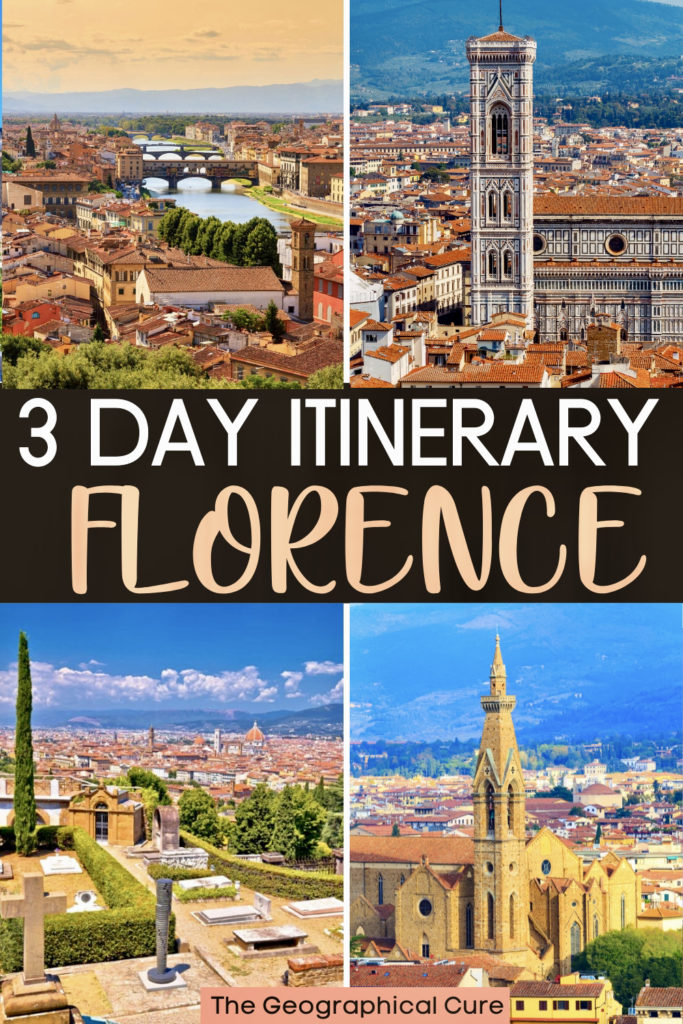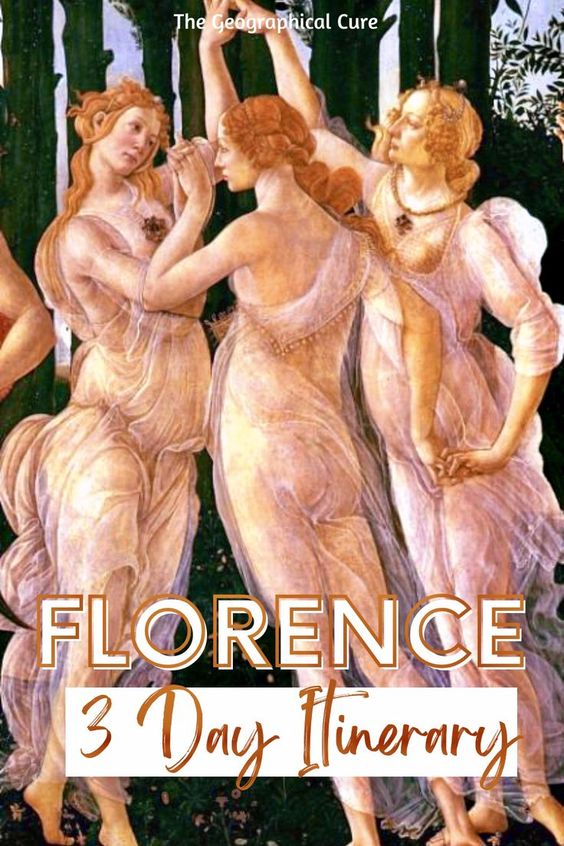Florence is a romantic city rich in art, history, and cultural heritage. It’s a treasure trove for admirers of Renaissance and Medieval art, home to Europe’s most celebrated masterpieces.
As you explore Florence, you’ll encounter stunning monuments and architectural feats from its golden age in the 15th and 16th centuries, each telling the story of the city’s storied past.
For me, it’s the ultimate European city – small in size but immense in culture and beauty!
If you’re wondering how best to visit the city, my 3 days in Florence itinerary covers all of the must visit attractions, iconic landmarks, hidden gems, and the best viewpoints.
Snapshot of 3 Days In Florence Itinerary
Here’s a quick glance of what you’ll see with this itinerary:
- Day 1: Duomo complex, Ponte Vecchio, Uffizi Gallery, Vasari Corridor
- Day 2: Accademia Gallery, San Marco Monastery, Santa Maria Novella, San Lorenzo Basilica, Medici Chapels, Palazzo Vecchio
- Day 3: Bargello Museum, Oltrarno, Pitti Palace, Boboli Gardens, Brancacci Chapel, Viewpoints
I recommend getting the Florence Pass to give you easy skip the line access to the sites.
3 Days In Florence Itinerary
Day 1 Morning: Duomo Complex
Start your Florentine adventure at the Cathedral, officially known as Santa Maria del Fiore but commonly called the Duomo.
The Duomo complex isn’t just the cathedral itself. It also includes the Duomo Museum, Giotto’s Bell Tower, and the Baptistery.
Visiting the Duomo ,and especially climbing the dome, requires some planning. It’s a highly popular activity, so being organized is key to making the most of your visit.
You may want to book a guided tour of the Duomo itself. You can also book a guided tour of the Duomo that includes access to the dome and secret terraces that you wouldn’t see on a regular visit.
It’s absolutely essential to pre-book a ticket to climb Brunelleschi’s dome.
1. Duomo Museum
Begin your journey at the mesmerizing Duomo Museum, also known as Museo dell’Opera del Duomo. This is the perfect place to get a historical context for all the structures you’ll see.
Located in Piazza del Duomo, right behind the apse of the Duomo and near Giotto’s Bell Tower, the museum is like a treasure chest filled with incredible sculptures.
Don’t miss the chance to check out the museum’s rooftop terrace, where you can enjoy a stunning view of Brunelleschi’s dome.
As you enter the museum, prepare to be captivated by the museum’s highlight — the brilliantly illuminated Hall of Paradise.
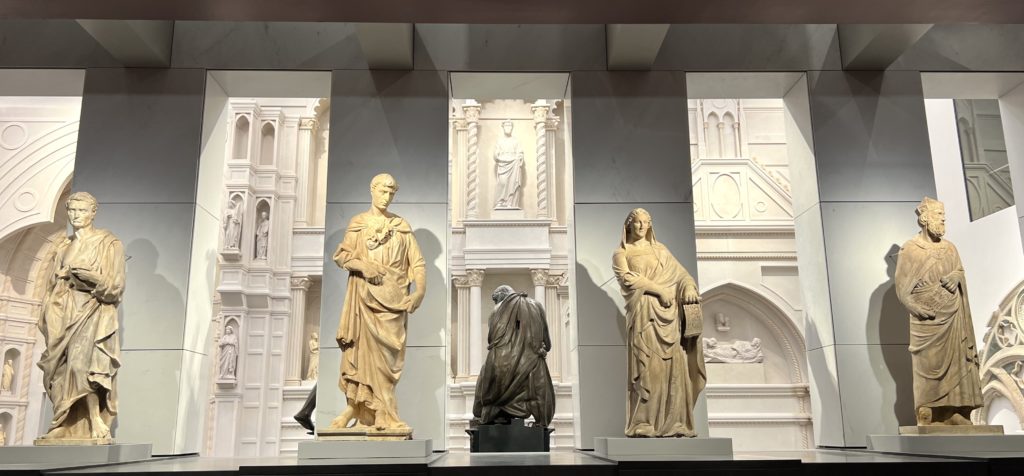
The hall contains a magnificent reconstruction of a Duomo facade designed by the first Duomo architect Arnolfo di Cambio. In 1587, it was torn down to make room for a Renaissance facade (that was never completed).
The museum also has an unparalleled collection of Medieval and early Renaissance Florentine pieces that once decorated the Duomo complex structures.
You will find pieces by artists such as Ghiberti, Donatello, Michelangelo, Arnolfo di Cambio, and Nanni di Banco.
2. Duomo
Then, head to Florence Cathedral — the most prominent, and popular, landmark in Florence. It was built over 172 years, beginning in 1296.
The Commune of Florence hired architect Arnolfo di Cambio, a man responsible for building much of 13th and 14th century Florence.
Florence Cathedral is Gothic in style, but not in the light and elegant way you think of Paris’ Notre Dame. It’s made of brown sandstone and beautifully faced with pink, green, and white marble.
Filippo Brunelleschi’s magnificent terra cotta colored dome, built from 1420-36, is the highlight. The burnt orange Duomo cupola is the very symbol of Florence.
It’s decorated with frescos by Giorgio Vasari, a Florentine artist and the world’s first art historian.
For panoramic views, climb up Brunelleschi’s dome. You can admire the Vasari frescos up close and have stunning views over Florence.
Remember to book a a skip-the-line ticket to climb the dome. Alternatively, you can take in views from Giotto’s Bell Tower.
READ: Guide To the Best Views in Florence
3. Baptistery
Next, stroll to the Baptistery, in front of the main facade of the Duomo. Dating from 1059, it’s over a thousand years old.
The Baptistery sports three magnificent sets of bronze doors.
On the eastern side are the famous golden “Gates of Paradise” designed by Lorenzo Ghiberti and nicknamed by Michelangelo. (The originals are now fully restored and housed in the Duomo Museum.)
The Baptistry is lined with ancient Roman columns of gray granite. It was likely repurposed from the ancient Roman Forum down the street.
The highlight is a stunning golden Byzantine style ceiling mosaic telling the story of The Last Judgement. You can plop down on the pews and admire it.
Day 1 Afternoon: Ponte Vecchio | Uffizi Gallery
Break for lunch and a wander, enjoying the joys of a traffic free Florence. Try Casa del Vino, where you can get sandwiches, crostini, or charcuterie plates with a delicious glass of wine.
All’Antico Vinaio is also a must-try, just minutes away from Piazza della Signoria. Sandwiches are made with a local bread called schiacciata.
1. Ponte Vecchio
Then take a stroll across Florence’s storybook bridge, the Ponte Vecchio. It looks like cobbled together houses suspended over the Arno River.
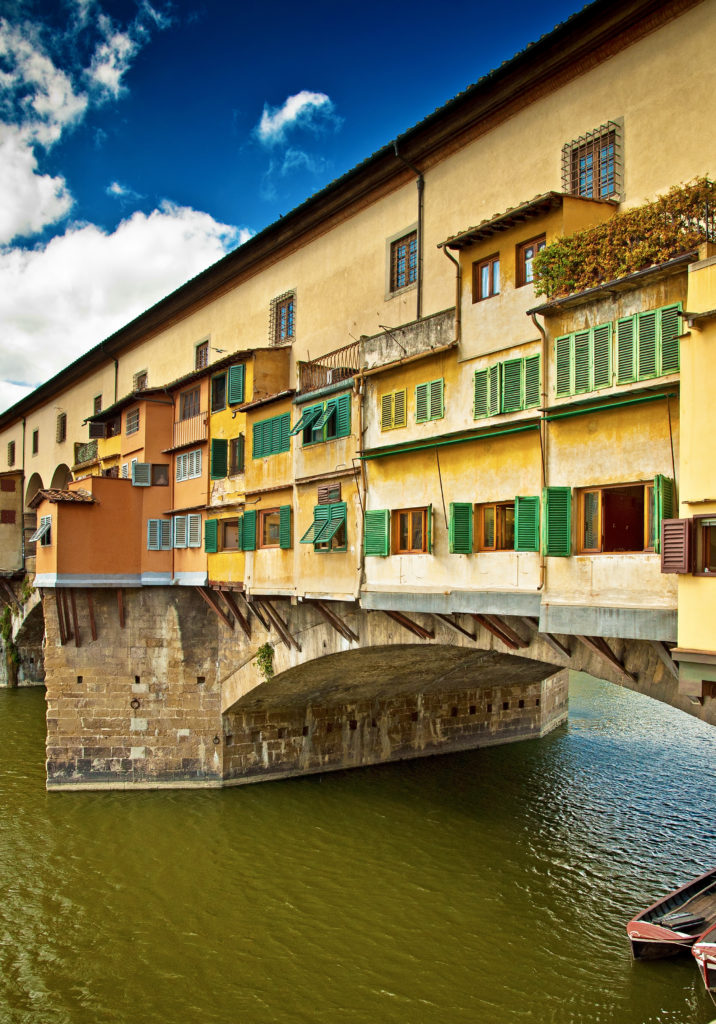
The bridge has three arches topped with a jumble of charming shops. In an urban setting, space was at a premium, so the bridge became a sort of mall.
Originally, the Ponte Vecchio housed unglamorous butcher shops. But the Medici didn’t like escorting their aristocratic guests and diplomats over the bridge with the wafting stench.
So they swamped the butchers for goldsmiths. Now, you can buy expensive jewelry on the Ponte Vecchio.
It’s a gathering place in the evening, with tourists and locals mingling alike. Sometimes you’ll hear musicians.
2. Uffizi Gallery
For the next step in your Florence adventure, make your way to the impressive Uffizi Gallery, which is Florence’s number one attraction.
The Uffizi is Italy’s top gallery, and it is home to the world’s most extensive collection of Italian medieval and Renaissance art.
As the third most visited site in Italy, the Uffizi is a crowd-pleaser and certainly deserves all the praise it gets. The museum is a treasure trove of seminal works from the 13th to 18th centuries.
You won’t want to miss the opportunity to see Sandro Botticelli’s Birth of Venus and Primavera, two of the world’s most iconic paintings.
READ: Guide To the Botticelli Trail in Florence
If your time is limited, you should focus your efforts.
The must see halls include the Hall 2 (Giotto), Hall 8 (Lippi), Halls 10-14 (Botticelli), Hall 15 (Leonardo), Hall 41 (Raphael and Michelangelo), Hall 83 (Titian), and Hall 90 (Caravaggio).
You’ll need to book a ticket in advance to avoid the museum’s notoriously long queues.
The Uffizi is also a popular place to take a guided tour, because of its history and the sheer number of masterpieces.
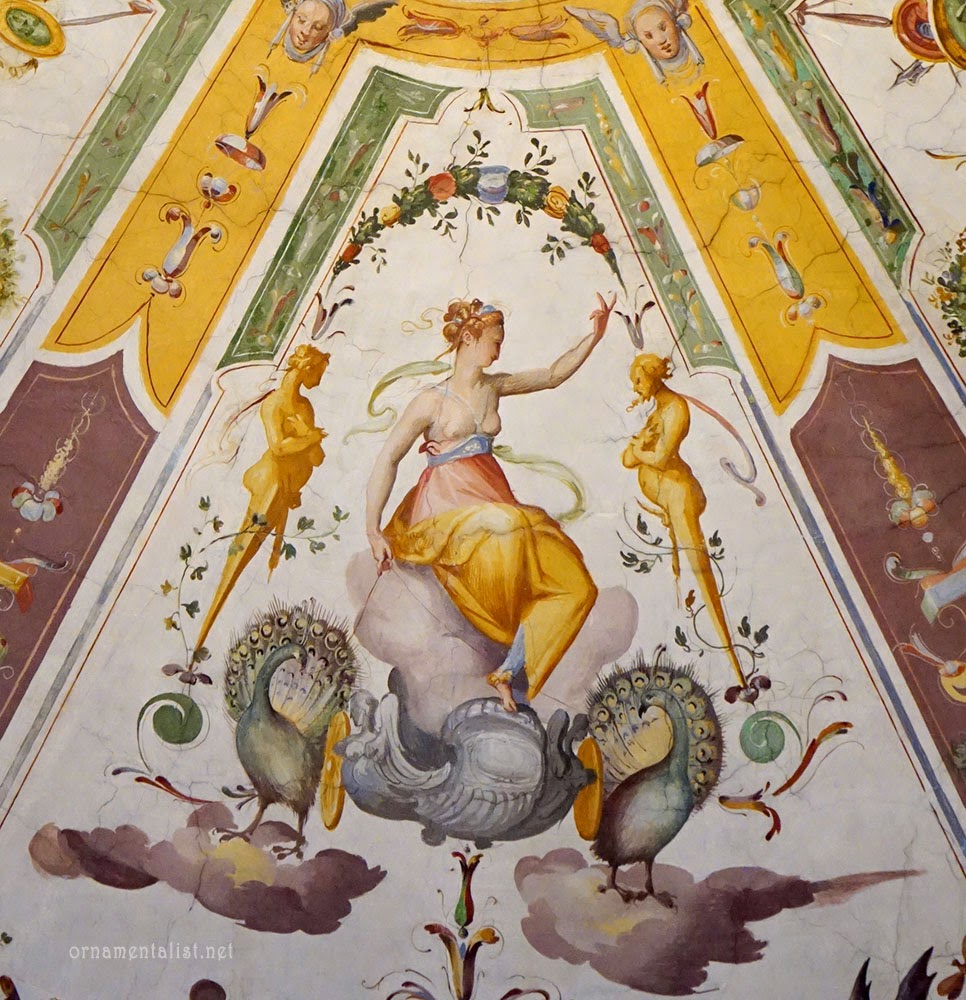
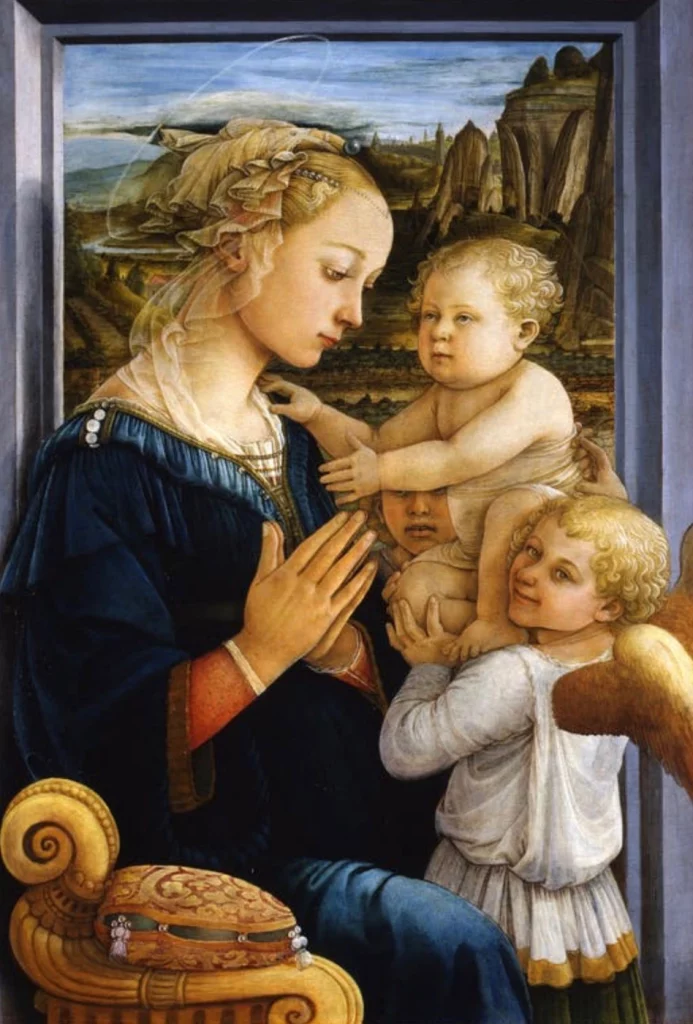
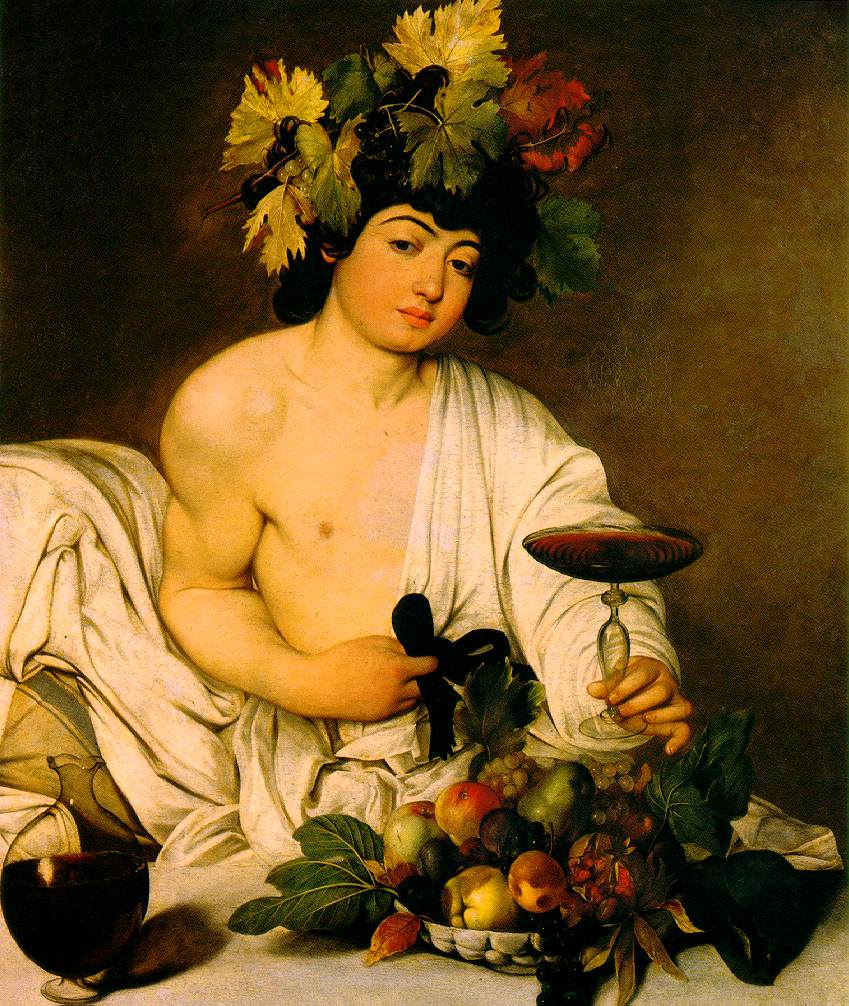
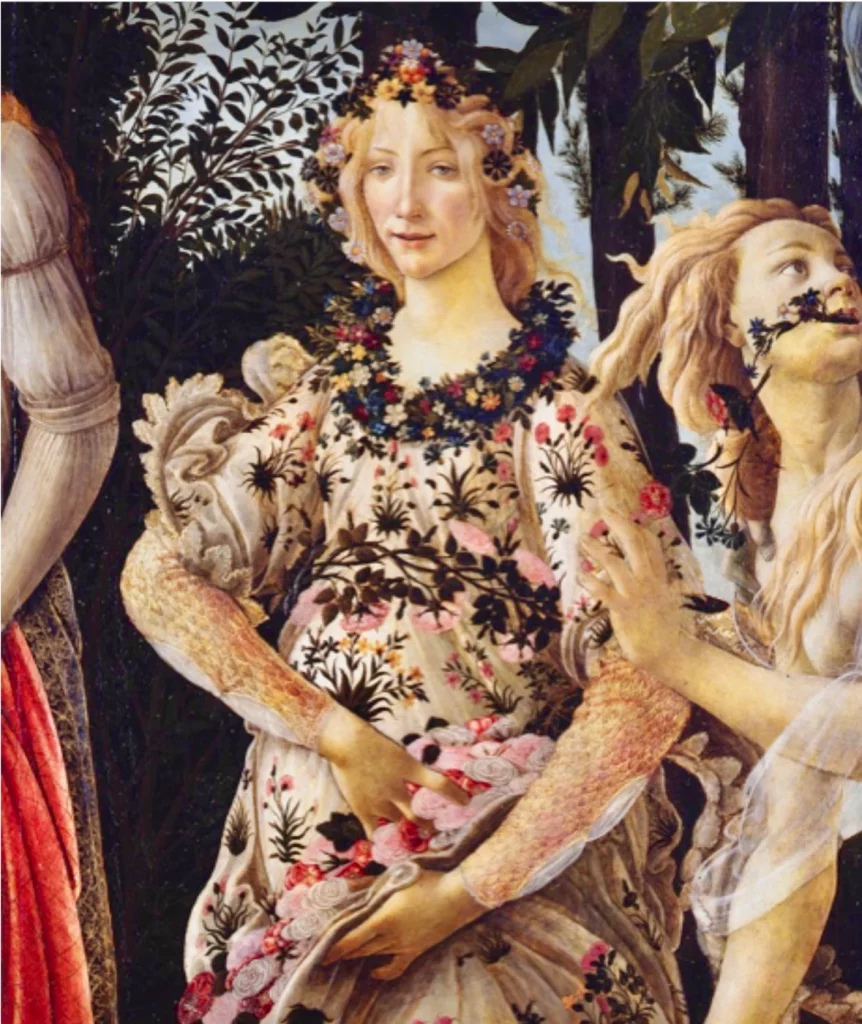
You have several options:
- 1.5 hour small group guided tour
- 2 hour small group guided tour
- 2 hour private tour
- 2 hour early entry guided tour (8:30 am)
- combined tour of the Uffizi + Brunelleschi’s dome
- 5 hour tour of both the Uffizi and the Accademia
I recently took the 2 hour private tour with Martina Arezzini of City of Florence Tours and it was excellent.
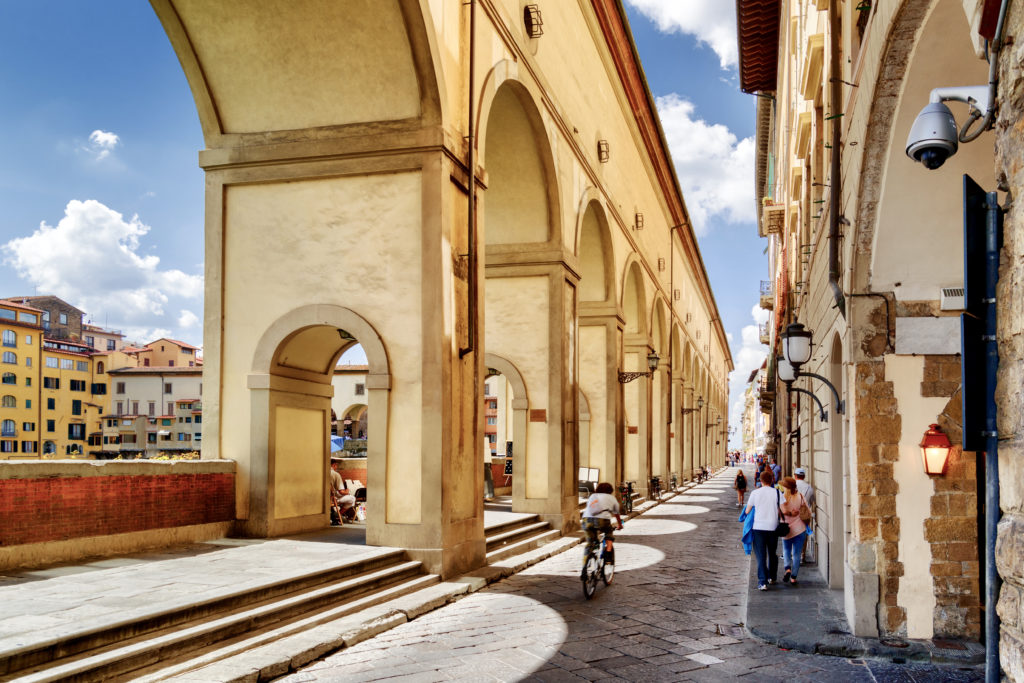
3. Vasari Corridor
The Vasari Corridor is an extraordinary site in Florence. It’s a 2/3 of a mile long elevated private passageway that connects the Uffizi Gallery to the Pitti Palace.
It was built by Giorgio Vasari for Cosimo I and the Medici dukes in 1655. It’s often called the “passage of Princes.”
It allowed the Medici family to walk above the heads of the riff riff and move privately between their office and home.
The corridor is decorated with the Medici’s private portrait collection. It’s currently under renovation. It’s supposed to open to the public in Spring 2024, but my guides said that deadline will likely be missed.
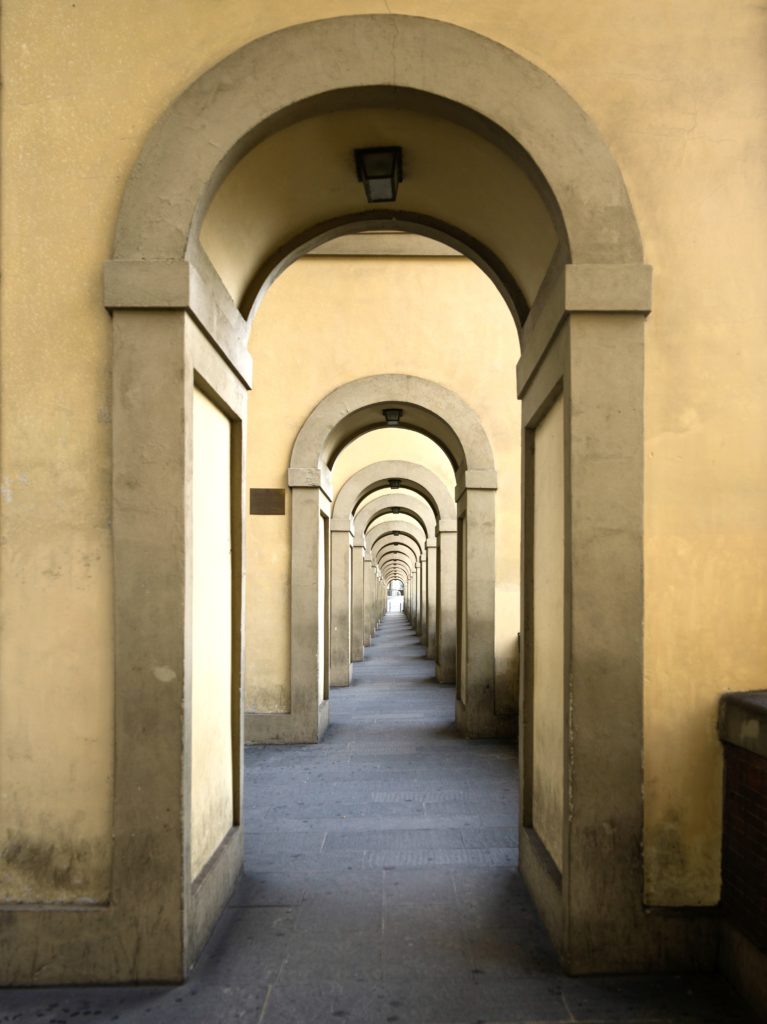
Day 1 Evening:
For dinner, dine at Trattoria da Tito, not far from the Accademia, or Bobo’s Trattoria.
Alternatively, you could take a guided food tour for the total Florence food experience or a 3 hour 10 tastings food tour.
If you need more art, the Palazzo Strozzi is often open at night with beautiful temporary exhibitions.
Otherwise, you can just take a moonlit stroll through the beautiful historic center.
Day 2 Morning:
1. Accademia Gallery
Start you morning bright and early at the Accademia Gallery, which is Florence’s second most visited museum. The main attraction here is the world-renowned sculpture by Michelangelo, the magnificent statue of David.
Standing at an impressive 17 feet tall, the statue is considered the epitome of male beauty, a symbol of physical perfection that could rival even the likes of a Calvin Klein model.
Originally, David was commissioned for the Florence Cathedral and was intended to be placed high up in a niche. However, once the statue was completed, the city officials felt that David was simply too stunning to be placed in such a lofty position.
But there’s more to the Accademia than just David. Michelangelo’s Prisoners grace the Hall of the Prisoners. They are four unfinished male nudes that were originally intended for the Tomb of Pope Julius II.
You can see Michelangelo’s approach to carving; the figures appear to be emerging from the marble. Another must see sculpture is Giambologna’s Rape of the Sabine Women.
You should definitely pre-book a skip the line ticket for this popular Florence attractions. Make sure to get in the correct line when you arrive.
You can also opt for a 1.5 hour guided tour with fast track ticket.
2. San Marco Monastery
When you’re done at the Accademia, head a few blocks to another amazing Florence art spot, the Museum of San Marco Monastery.
The monastery is a serene and irresistible hidden gem in Florence.
Even though it’s well known by art aficionados, it doesn’t always get the love it deserves. Don’t skip it!
San Marco is an extraordinary decorative complex, one of the most unusual things to do in Florence. It’s a rare opportunity to see Early Renaissance masterpieces in situ.
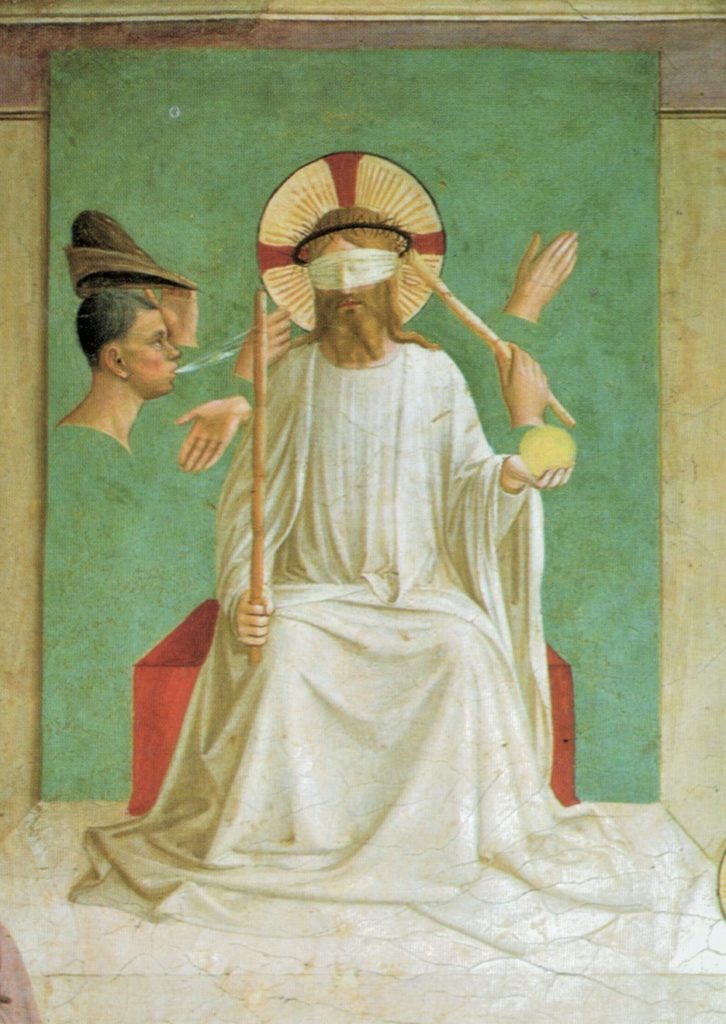
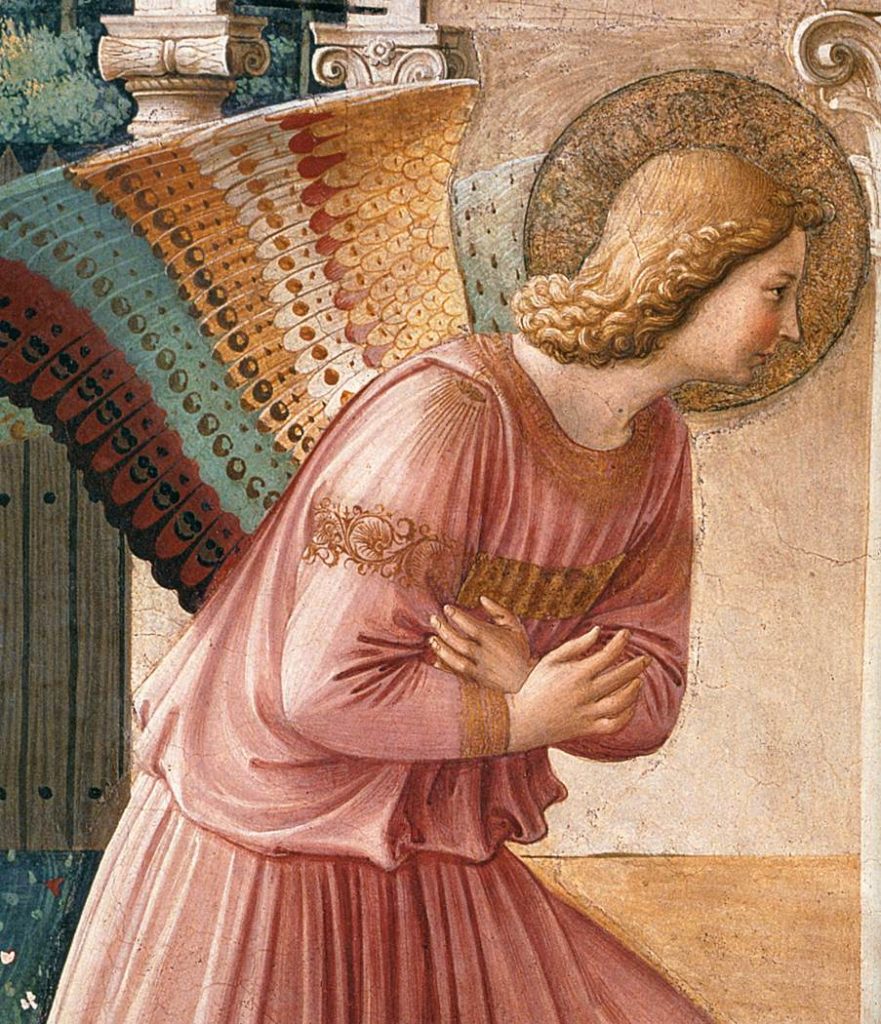
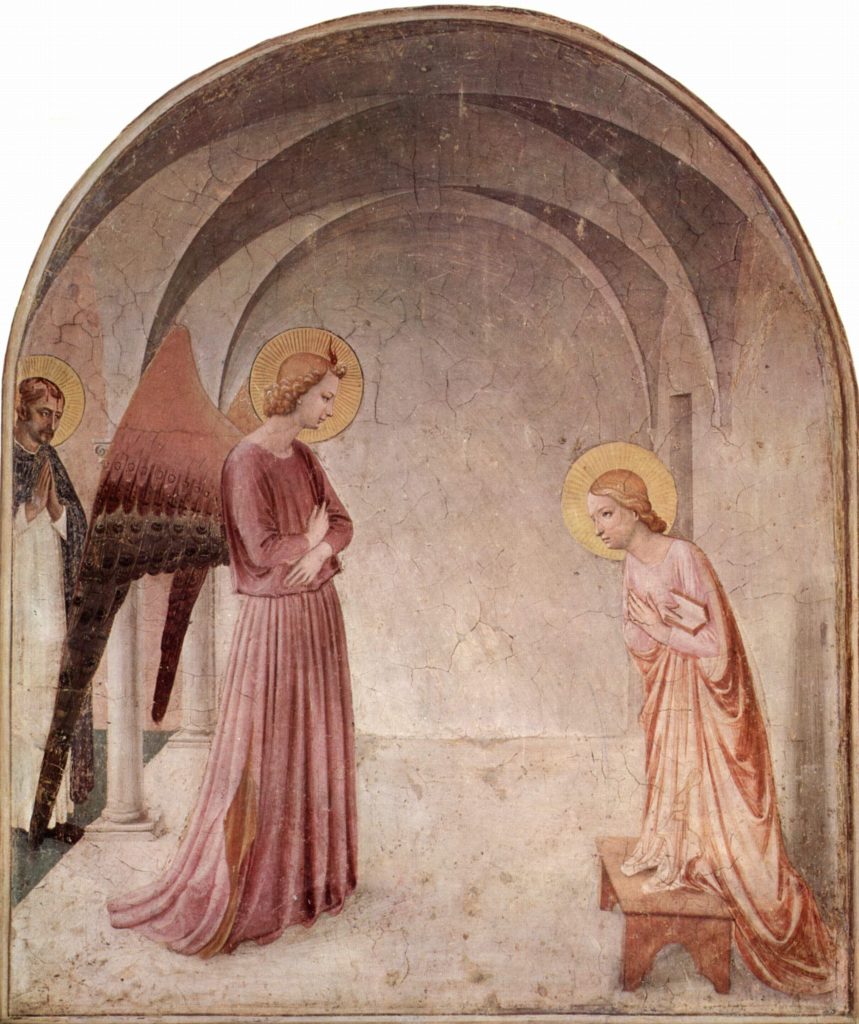
You can admire art in its original location and understand how contemporary audiences experienced it. This simply isn’t the case at the Uffizi or almost any other museum in Europe.
At this Renaissance convent-museum, you travel back in time to a nearly perfectly preserved 600 year old Dominican monastery.
It was paid for by Medici family money, designed by the stellar architect Michelozzo, and decorated with delicate frescos by one of the most sublime painters of the Renaissance — Fra Angelico. The fiery preacher Giralamo Savonarola even lived there, in the monks dormitory cells.
Here’s my complete guide to visiting San Marco Monastery. Click here for a skip the line ticket. Click here for a fascinating tour that gives you insight into Fra Angelico, Savonarola, and the Medici.
Day 2 Afternoon:
1. San Lorenzo Market
You’re likely ready for lunch. This is a good time to explore the San Lorenzo markets.
There are two of them, an outside street market and an indoor food court known as the Central Market.
I can recommend a rustic gem, Trattoria la Burrasca, on the market’s north corner. Click here for a tour of the market and a cooking class.
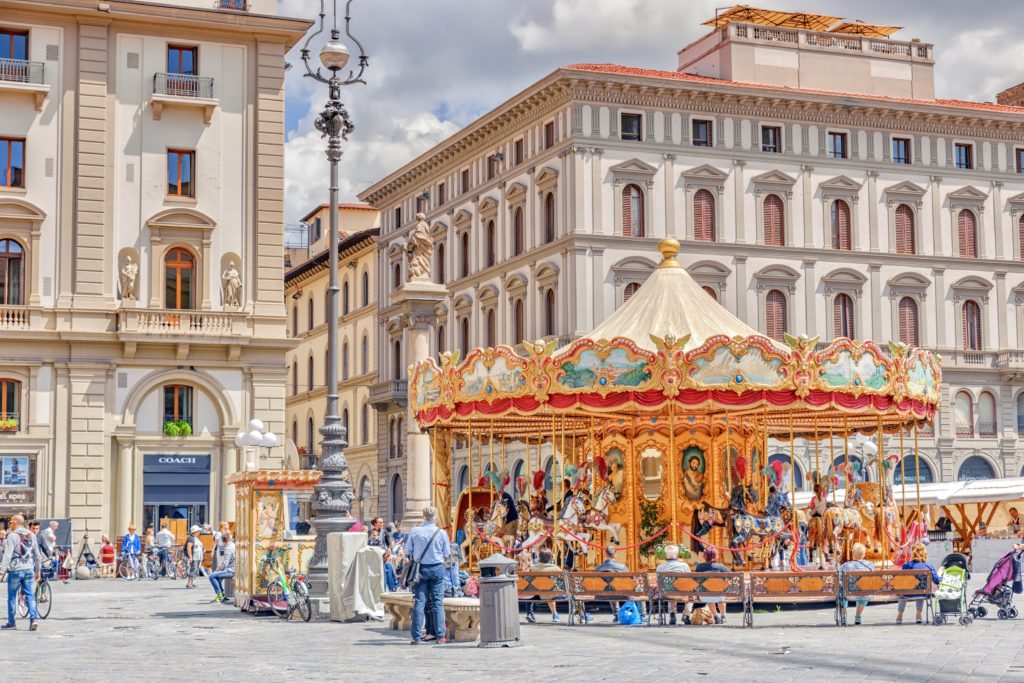
After lunch, wander around the Piazza della Repubblica.
This is the Roman heart of Florence and one of the main squares in the city. The Column of Abundance, dating from 1431, marks the point where once the Roman forum stood.
Today, you’ll find historic cafes, street artists, and a carousel for kids.
2. Santa Maria Novella
Next up is the beautiful Santa Maria Novella.
It was founded in 1279 by a Dominican order. The basilica has a similar design to the Duomo, with polychrome and white marble create a striking front facade.
The interior is a true marvel. It holds one of the most famous paintings in Italy, the Holy Trinity by Masaccio. You’ll want to inspect three important highlights — the Strozzi Chapel, the Filippo Chapel, and the Spanish Chapter House.
Close to the church is Florence’s (and the world’s) oldest pharmacy. It’s housed in a chapel right next door, decorated with vaulted ceilings, frescos, and ornate gilding and stucco.
Founded in 1221, its official name is the Farmaceutica di Santa Maria Novella.
Today, the pharmacy is a luxury store discreetly hawking beauty products with a cult following. Its products are handmade using Old World techniques. There’s also a small museum where you can view antique pharmaceutical instruments and pottery.
Click here for a tour of Santa Maria Novella and its ancient pharmacy.
2. Basilica of San Lorenzo & Medici Chapels
Next, head to the monumental complex of the Basilica of San Lorenzo. The complex is a veritable haven of Renaissance art and architecture, a must see for history buffs.
The complex is vast. It includes the basilica itself, Brunelleschi’s Old Sacristy, the Medici Chapels, the Medici Crypt, and the Laurentian Library.
Most importantly? It has the largest number of Michelangelo sculptures in Florence, quite a selling point. And a Michelangelo-designed library.
The Basilica of San Lorenzo was the official parish church of the Medici family. San Lorenzo’s facade was (and is) raw brownstone.
It was meant to be “frosted” with marble facing like Florence’s other churches. But it never happened. Don’t like the rustic brick facade fool you. The real treasures lie within.
My favorite spot is the New Sacristy in the Medici Chapels. It’s an incredibly unique monument. It’s an architectural space that was both designed and decorated by a single artist, Michelangelo.
He may have intended to paint the frescos as well, but he was called off to Rome. There are six tomb sculptures in the Medici Chapels carved by Michelangelo, including one of his best works, Night.
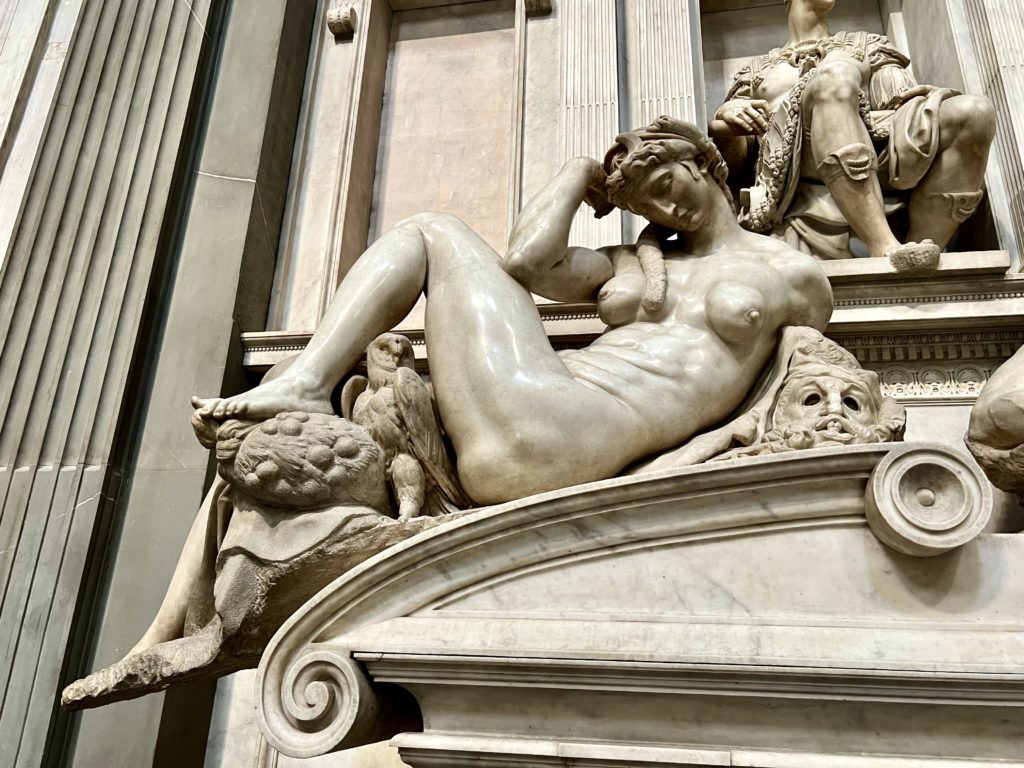
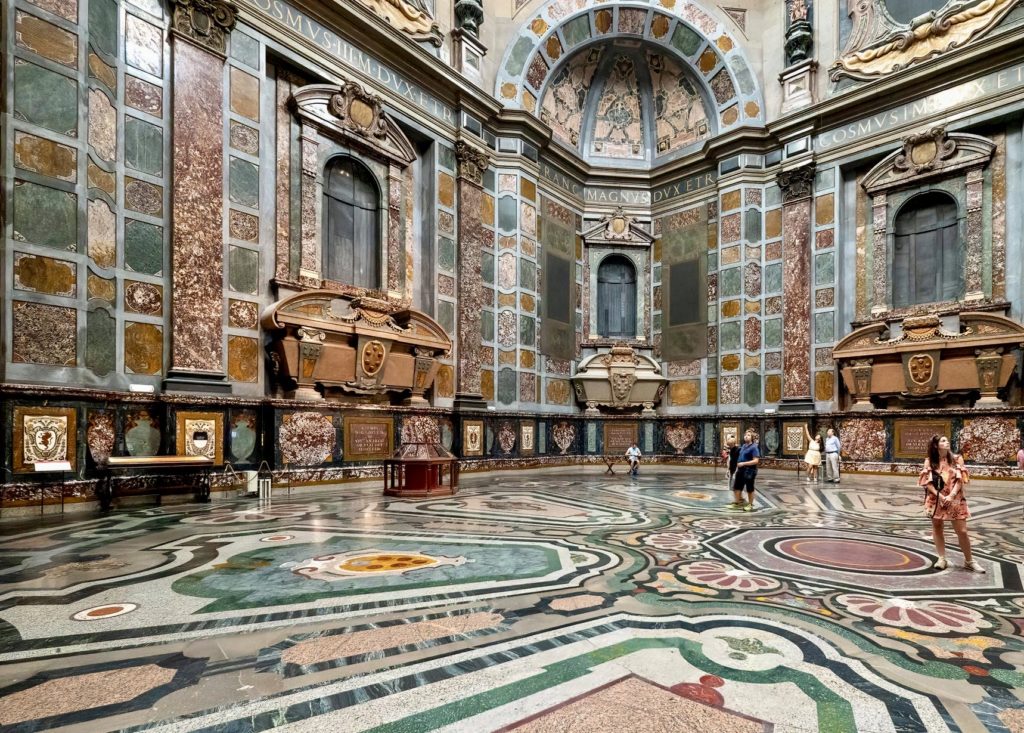
The Chapel of the Princes is is the main mausoleum for the Medici Family. It’s an unabashedly opulent and grandiose space, a bit outsize compared to the basilica itself.
Cosimo I ruled with absolute power. He wanted his chapel to reflect the authority, wealth, and glory of the Medici dynasty.
The chapel walls are clad with polychrome marble and semi-precious stones. They are to be simultaneously valuable and eternal, demonstrating the immortality of the Medici dynasty. No space is left undecorated.
The Medici Chapels require a separate ticket. Click here to purchase a ticket.
Day 2 Evening: Palazzo Vecchio
The Palazzo Vecchio is one of the few sites in Florence open at night. And it’s the best time to visit.
The Palazzo Vecchio was the seat of government and one of the three palace-residences of the Medici dynasty. It sits in the Piazza della Signoria, which is essentially a free open air sculpture gallery.
It’s definitely worth going inside the Palazzo Vecchio, though so many tourists don’t. The Palazzo Vecchio is a doughty medieval fortress on the outside and a resplendant Renaissance palace on the inside.
It’s one of Florence’s most historic and important buildings. In some ways, Palazzo Vecchio explains the entire history of Florence.
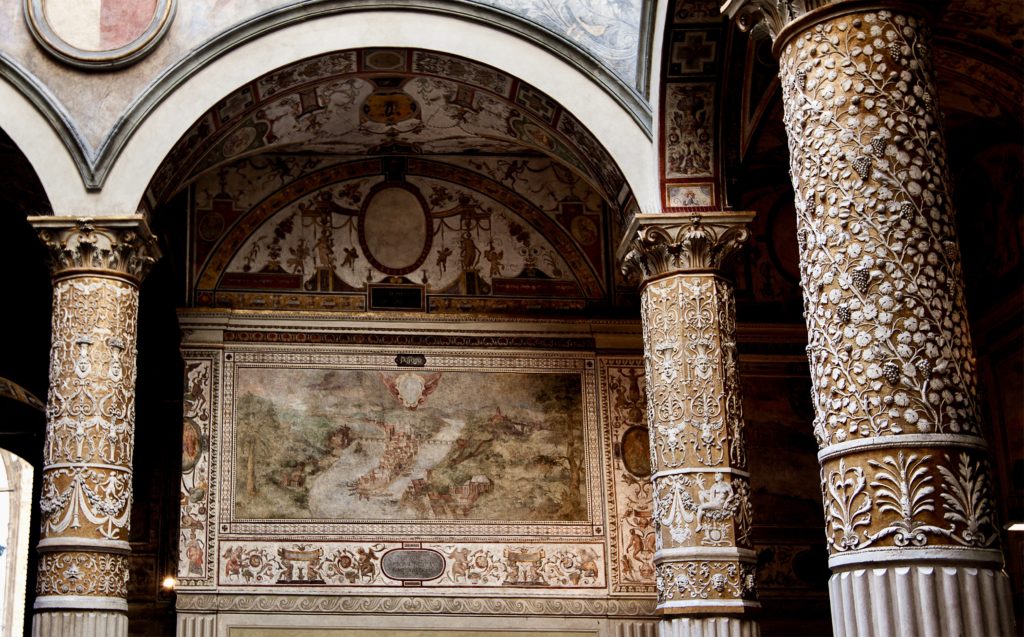
The Tower of Arnolfo can be climbed and provides fantastic views over Florence and the Duomo. And the lines aren’t nearly as long as for Brunelleschi’s dome or Giotto’s bell tower.
Inside, you can admire the stunning Michelozzo-designed courtyard, explore the grand Hall of the Five Hundred, admire Michelangelo and Donatello sculptures, and gaze admiringly at beautiful Giorgio Vasari frescos at every turn.
It’s rumored that the Vasari frescos in the Hall of Five Hundred may hide a “lost” Leonardo da Vinci battle painting.
On the second floor are the sumptuously decorated private rooms of the Medici, with recently restored frescos in the beautiful Apartment of the Elements. You’ll also find Donatello’s groundbreaking Judith and Holofernes sculpture in the Hall of Lilies.
You’ll should pre-book a skip the line ticket. This popular 2 hour guided tour includes the palace and a climb of the Tower of Arnolfo. You can also book a private guided tour.
After admiring the palazzo, have dinner in the historic center. If you want to splurge, two of my favorite restaurants are Buca Mario and Santa Elisabetta.
Day 3 Morning:
1. Bargello Museum
Start your day at the Bargello Museum, Florence’s underrated sculpture museum.
If you need a hearty breakfast before you visit, head to The Dinner for all manner of eggs and pancakes. It’s right by the Bargello.
The Bargello houses an amazing collection of Renaissance sculptures. The most important works are in the Michelangelo and Donatello rooms.
Those include Michelangelo’s first major sculpture, Bacchus, and his Pitti Tondo, Donatello’s acclaimed Bronze David and St. George, and Bernini’s Bust of Costanza.
READ: Guide To the Masterpieces of Donatello
Commissioned by Cosimo de Medici the Elder, Donatello’s Bronze David is the most famous piece in the museum.
It’s a daring depiction of a biblical theme. It’s the first freestanding nude sculpture since Greco-Roman times.
A nubile David is peculiarly depicted wearing no clothes except for a hat and boots, perhaps to suggest his underdog status. The statue is affectionately nicknamed “Puss ‘N Boots.”
The Bargello also houses the famous Competition Panels. In 1401, Florence held a competition for the first set of bronze doors to be made for the Baptistry.
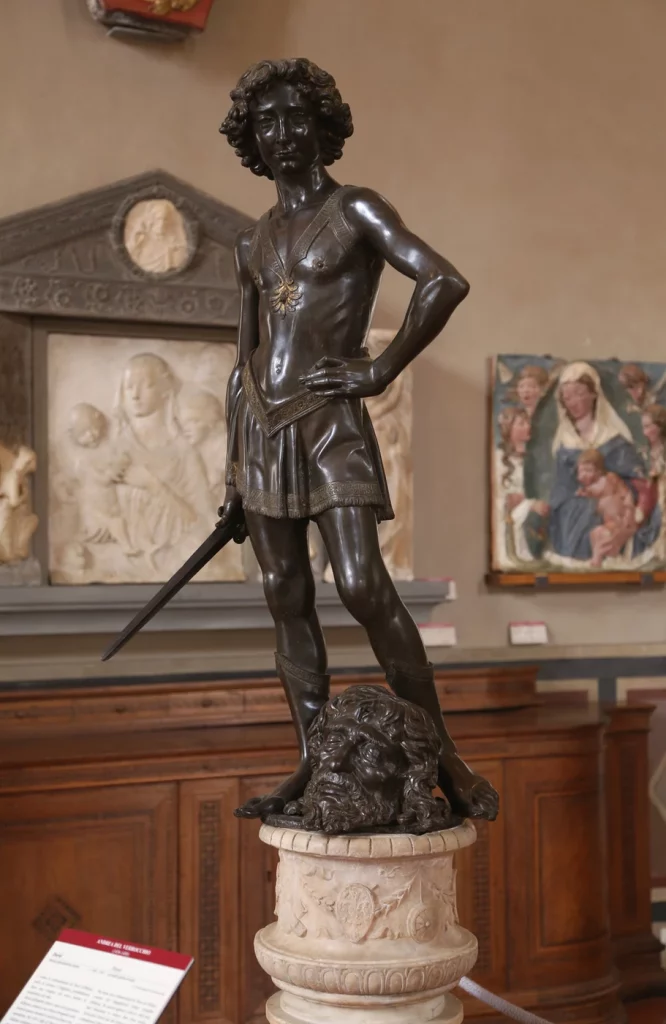
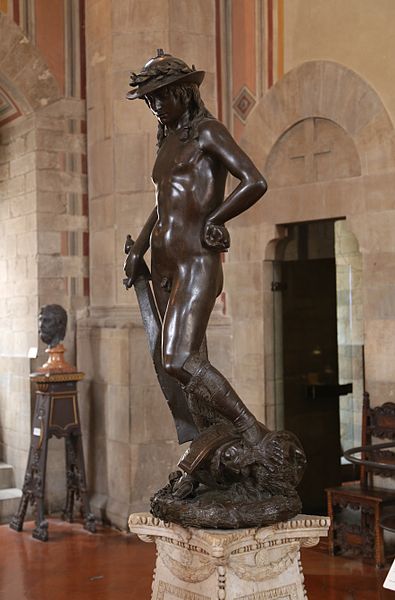
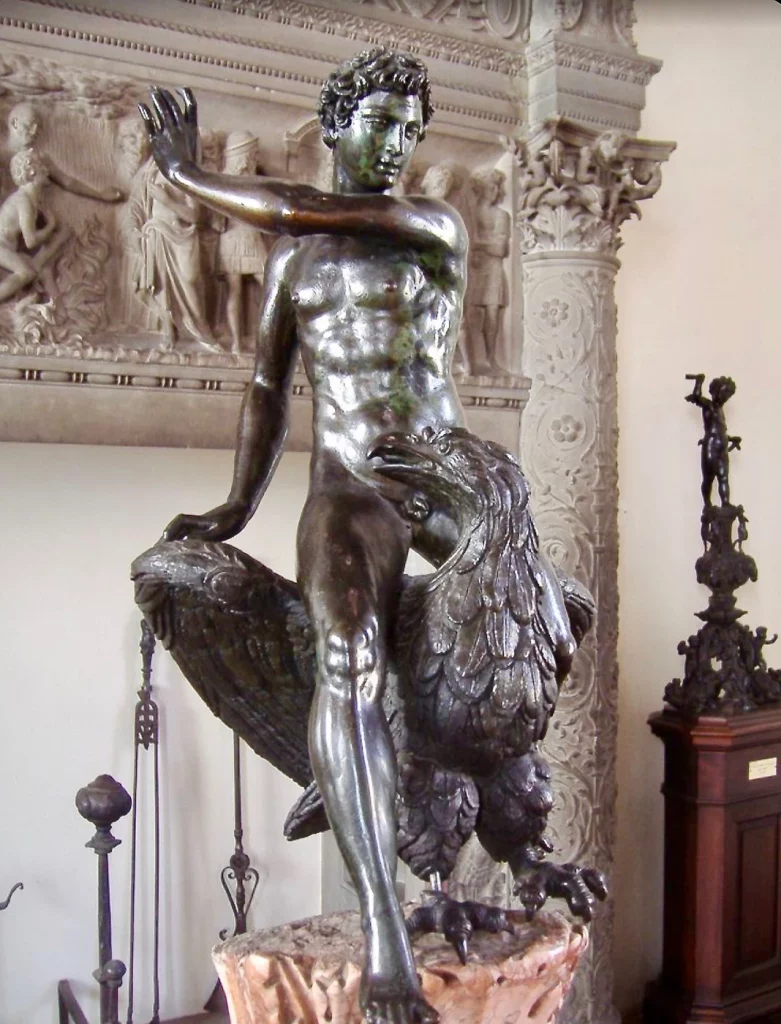
Artists submitted bronze samples. Ghiberti and Brunelleschi were the finalists, with Ghiberti winning the competition. 25 years later, he would create the “Gates of Paradise.”
Click here to pre-book a Bargello ticket. Click here to book a ticket + tour.
2. Basilica of Santa Croce
After exhausting the Bargello, head out to visit the amazing Basilica of Santa Croce. In a city studded with magnificent churches, Santa Croce takes top prize.
Santa Croce has one of the greatest assemblages of paintings, sculptures, and funereal tombs in existence.
Santa Croce is a place of superlatives. It’s the largest world’s Franciscan church
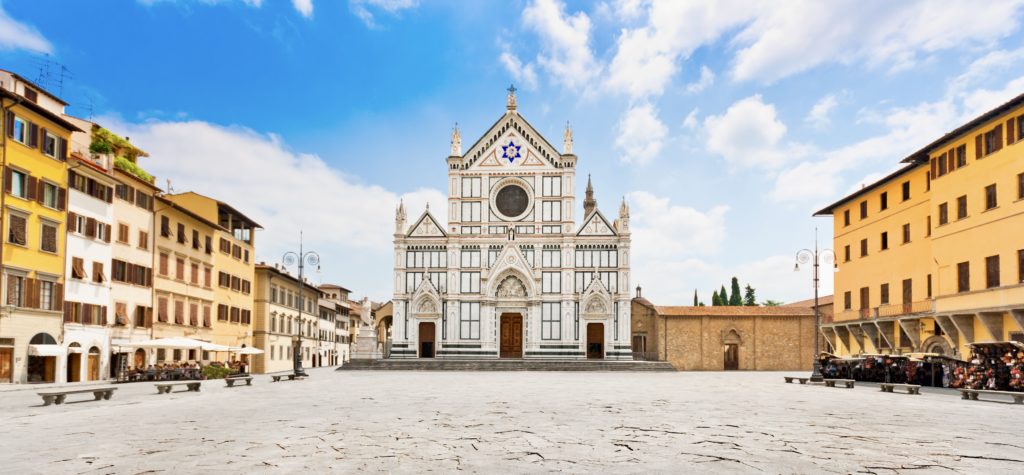
Santa Croce is a fine example of Italian Gothic style, and home to many celebrity tombs (including Michelangelo), magnificent frescos, and Donatello sculptures. It’s a place of one stop shopping for Italian culture.
In particular, the frescoed chapels are impressive. The bests ones are the Bardi Chapel, the Peruzzi Chapel, the Pazzi Chapel, the Baroncelli Chapel, and the Maggiore Chapel.
You’ll find frescos by Giotto, the greatest artist of the 14th century, and other Renaissance luminaries.
If you have time, take in the basilica’s museum, housed in the former refectory.
There, you’ll find Tadeo Gaddi’s beautiful The Last Supper and Tree of Life. His Last Supper is the oldest Last Supper painting in Florence, a city with a cottage industry in this theme.
>>> Click here to pre-book a guided tour
In the Santa Croce neighborhood, in the Piazza del Mercato Nuovo, you’ll find the famous bronze Porcellino, or little pig, sculpture.
The sculpture is a Roman copy of a Greek sculpture. For good luck, it’s a tradition to rub the boar’s well worn bronze nose.
If you want to lunch in the Santa Croce area, try the tiny but mighty Le Vespe Cafe. There will be lines, but it’s well worth the wait.
Day 3 Afternoon:
1. Oltrarno
In the afternoon on day 3 in Florence, cross the Arno and head to Florence’s Oltrano neighborhood. This may be Florence’s most trendy neighborhood.
There are three must see sites in the Oltrarno neighborhood: the Pitti Palace, the Church of Santo Spirito, and the Brancacci Chapel in Church of Santa Maria del Carmine.
If you didn’t break for lunch in the Santa Croce area, there are plenty of places near the Pitti Palace in the Piazza della Passera.
Other good restaurants near the Ponte Vecchio include Il Magazzino, 5 e Cinque, and Trattori 4 Leoni. Once fueled up, head to the Pitti Palace.
2. Pitti Palace
The Pitti Palace is a must visit attractions with 3 days in Florence. To visit the Pitti Palace is to immerse yourself in beauty and history. The palace is an incredibly unique combination of splendor, in situ art collections, and beautiful gardens.
The magnificent Palazzo Pitti was the regal home of the Medici family. The palace is the largest palace in Florence and one of Florence’s most stunning architecture gems. Built in 1457, it was built for Florentine banker Luca Pitti, a Medici rival
The museum houses several museums. The one you can’t miss is the Palatin Gallery. It occupies the left wing of the first floor.
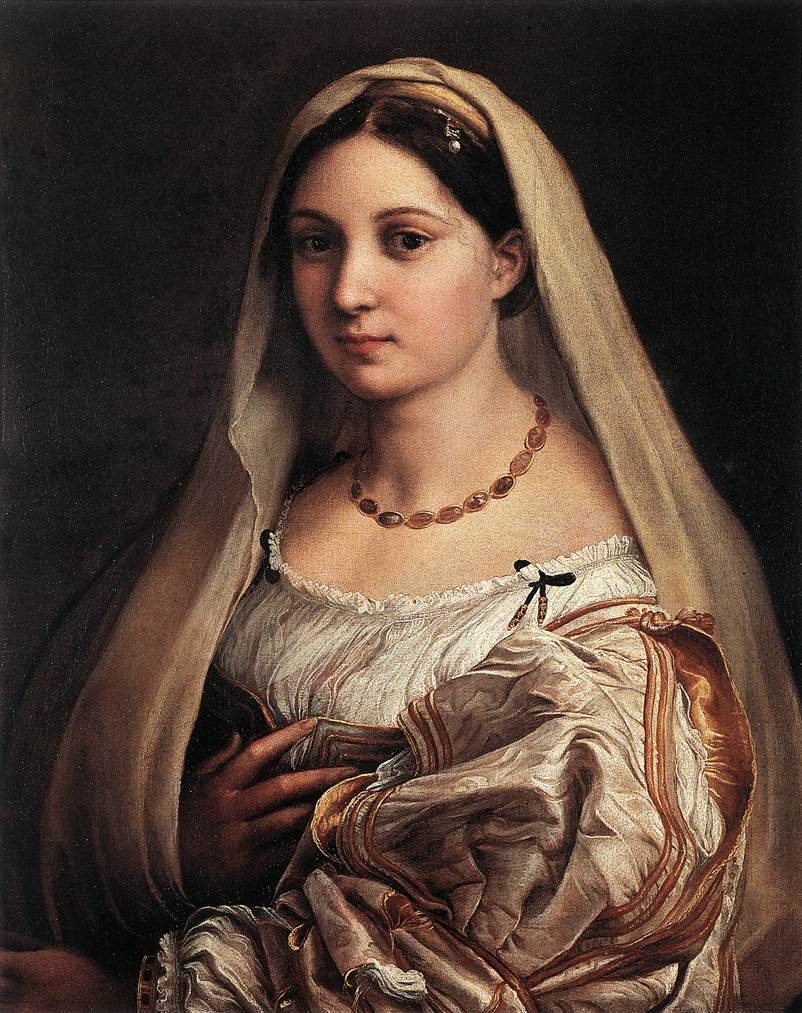
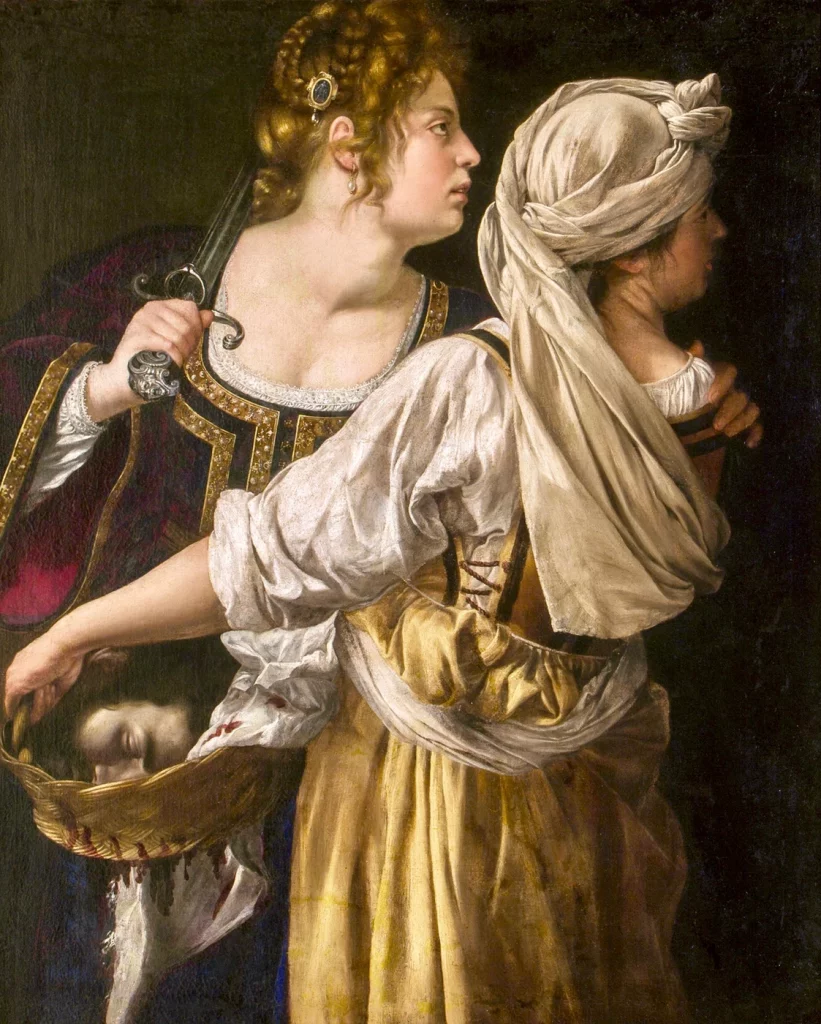
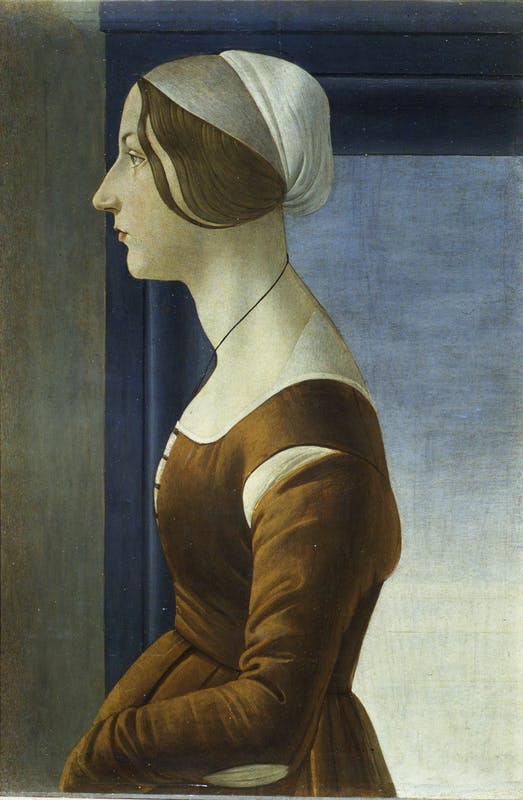
The gallery houses an impressive collection of over 500 in situ paintings, chock a block on top of each other amid lavish stucco and silk furnishings. In the five Planet Rooms, there are beautiful ceiling frescos by Pietro da Cortona.
The collections include works by Raphael, Titian, Rubens, Caravaggio, and other European and Italian painters. Be sure to check out Botticelli’s and Lippi’s Madonna and Child in the Prometheus Room.
Two versions of Andrea del Sarto’s massive Assumption of the Virgin are in the Iliad Room. And one of my favorite artists, Artemisia Gentileschi, has another version of Judith and Holofernes in the Saturn Room.
Click here to pre-book a ticket to the Pitti Palace. The palace has very little signage. Unless you are an art expert, you may want to book a guided tour of the magnificent museum.
3. Boboli Gardens
After gazing at these master works, head to the backyard playground of the Pitti Palace, the lovely Boboli Gardens. The gardens are the largest green space in Florence, sprawling over 11 acres.
The gardens are effectively an open air museum, with hundreds of nooks to explore. They opened to the public in 1776.
The gardens are laid out in the Italian style, with beautifully worn Renaissance statues and fountains. The Rococo Kaffeehaus is on the eastern edge of the gardens, and its terrace is the perfect viewing point.
The famous Fountain dell’Oceano and the Bathing Venus were sculpted by the underrated artist Giambologna, whose statues grace the Bargello Museum and the Piazza della Signoria.
The Grotto Grande, also known as the Buontalenti Grotto’s, is a fascinating place. In 16th century Tuscany, it was the fashion to build decorative grottos reconstructing natural caves.
The grotto once had a fresco by Michelangelo (now in the Accademia) and has copies of his four slaves.
Click here to pre-book a skip the line ticket to the Boboli Gardens.
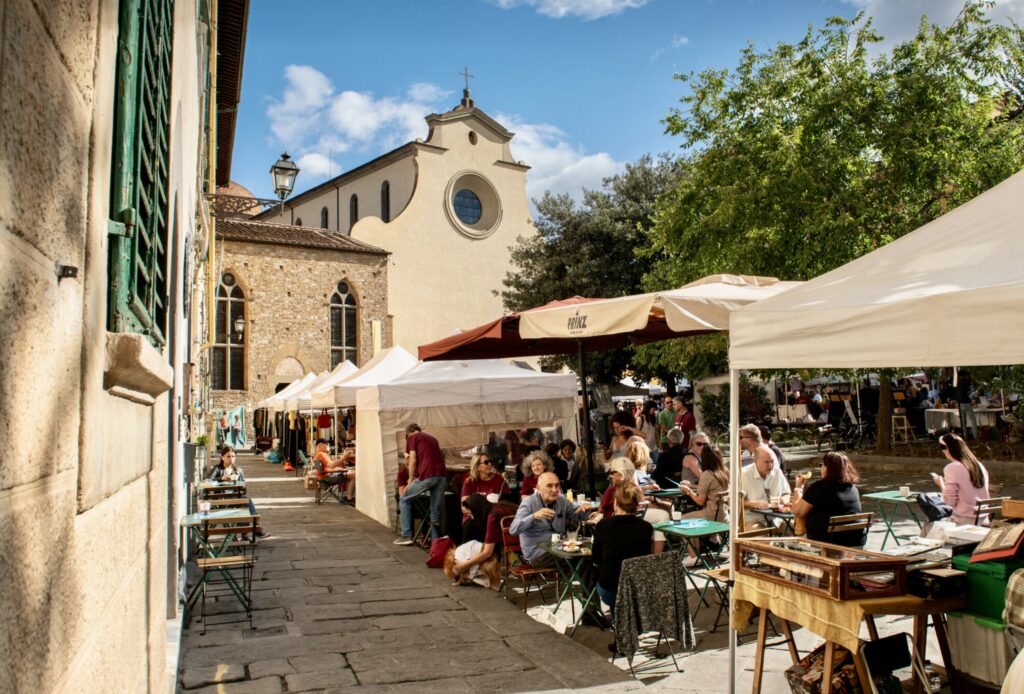
4. Santo Spirito
Next, make your way to the Basilica of Santo Spirito. This church, Brunelleschi’s second in Florence after the Basilica of San Lorenzo, is a real hidden treasure. You’ll find it nestled in a charmingly eclectic piazza in the Oltrarno district.
The Santo Spirito area is great for grabbing a bite to eat. The piazza itself is one of my personal favorites in Florence.
If you’re looking for a quick lunch, try Gustapanino for some delicious panini or pop into Mama’s Bakery for a tasty quiche or pastry. For a coffee or espresso, Ditta Artiginale is a trendy spot that’s definitely worth checking out.
Santo Spirito, built in 1440, is a pivotal work of the early Renaissance. The church is an important example of how Brunelleschi broke away from outdated medieval church styles by using perspective and geometry.
For Brunelleschi, beauty was found in harmony and mathematical perfection. He was inspired by the classicism of Ancient Rome.
Despite its unassuming exterior, this beautiful Florence church boasts a rather severe interior. Once inside, you’ll discover a fragment of one of Florence’s oldest Last Supper paintings, as well as a large crucifix attributed to Michelangelo.
READ: All The Last Supper Paintings From Renaissance Italy
5. Brancacci Chapel
If you have time left, head to the Brancacci Chapel in Santa Maria delle Carmine. It’s just 5 minutes or so from Santo Spirito.
The chapel is a supreme example of Early Renaissance painting. The chapel is completely filled with frescos by Masaccio and his workshop.
The Brancacci Chapel is considered one of the three important chapels of the Renaissance, along with the Giotto’s Scrovegni Chapel in Padua and Michelangelo’s Sistine Chapel in Rome.
The top Masaccio masterpieces are the The Tribute Money and the Expulsion of Adam and Eve From Eden.
By introducing naturalism and emotion into his paintings, Masaccio would influence later High Renaissance artists like Leonardo and Michelangelo.
>>> Click here to pre-book a ticket
Day 3 Evening: Oltrarno Viewpoints
Cap off your 3 days in Florence with some amazing views over the city from the Oltrarno. The best viewpoints are at Piazzale Michelangelo and the Basilica of San Miniato al Monte.
When people visiting Florence want a panoramic view, they usually head to Piazzale Michelangelo, Florence’s famous lookout square.
Piazzale Michelangelo has its charm, with its replica of Michelangelo’s David. But it’s often crowded with tourists and lined with vendors selling souvenirs.
For a truly exceptional experience, keep going. Just a 5-10 minute walk uphill from there, you’ll find San Miniato al Monte. The climb might be challenging, but I assure you, it’s absolutely worth it
San Miniato is an oasis of calm away from the hurly burly of Florence with amazing Gothic art and unsurpassed views. The perspective over the city is absolutely extraordinary.
If you get there before closing, head inside. The ancient Romanesque church is a unique and harmonious blend of medieval architectural styles, pre-dating Florence’s Renaissance treasures.
Right behind the basilica is the Porte Sante Cemetery, which also boasts great views. Built in the 19th century, the cemetery was designed by Niccolo Matas.
He was also the architect for the facade of the Santa Croce. The graveyard is an open air museum, stuffed with beautiful funeral art, mausoleums, and memorials of illustrious Florentine Catholics.
The private temples and tombs are in varying architectural styles, from Renaissance to Art Deco. Many of them are inspired by Florence’s churches.
Some are decorated with symbols, allegorical figures, and sentimental portraits. The most famous effigy (shown above) depicts the Mazzone siblings dancing together, fully united in the after life.
For dinner, your best options in this area are Hysteria del Bricco and Il Bastion di San Niccolo.
Or you can head back to the center of the Oltrarno and have dinner at Trattoria Cammillo or Dalla Lola. Nearby, you’ll also find Florence’s best gelato at La Strega Nocciola.
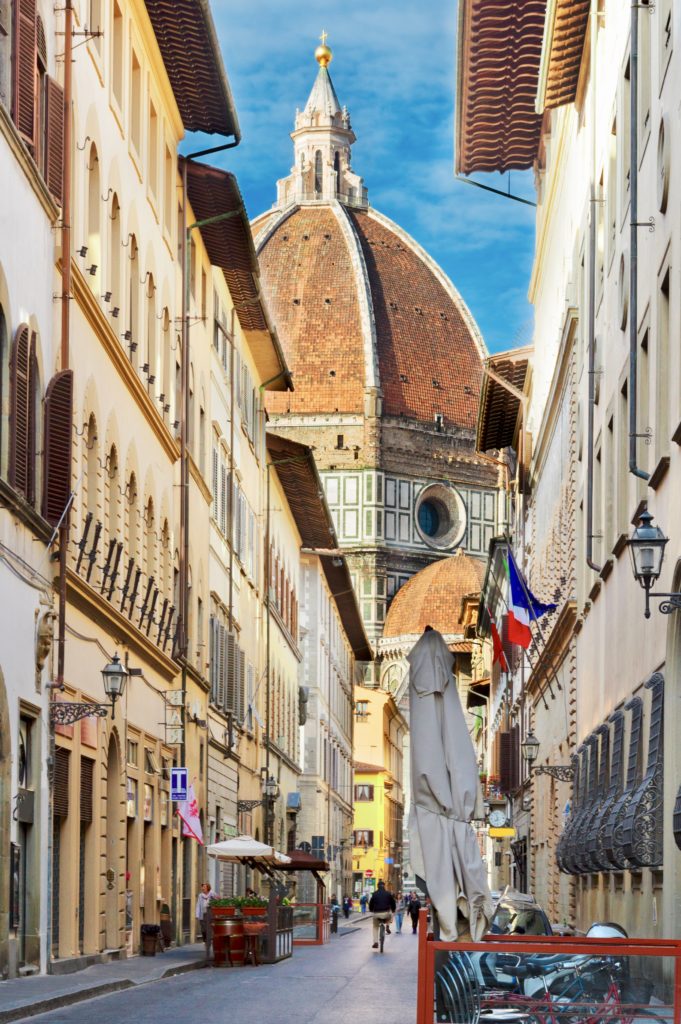
Tips For Spending 3 Days In Florence
1. How To Get To Florence
By Plane:
Florence has a small airport called Amerigo Vespucci Airport (FLR), which is located just 2.5 from the city center. From there, it’s just a short cab ride to the historic center. You can also book a private transfer.
By Train:
Florence is well connected to other major cities in Italy and Europe by train. The main train station in Florence is Santa Maria Novella, which is located in the city center. You can reach Florence by high speed trains from Rome, Milan, Venice, Naples, and other major cities in Italy
By Car:
Florence is also well connected by highways to other cities in Italy. However, driving in the city center can be difficult due to traffic restrictions and limited parking options.
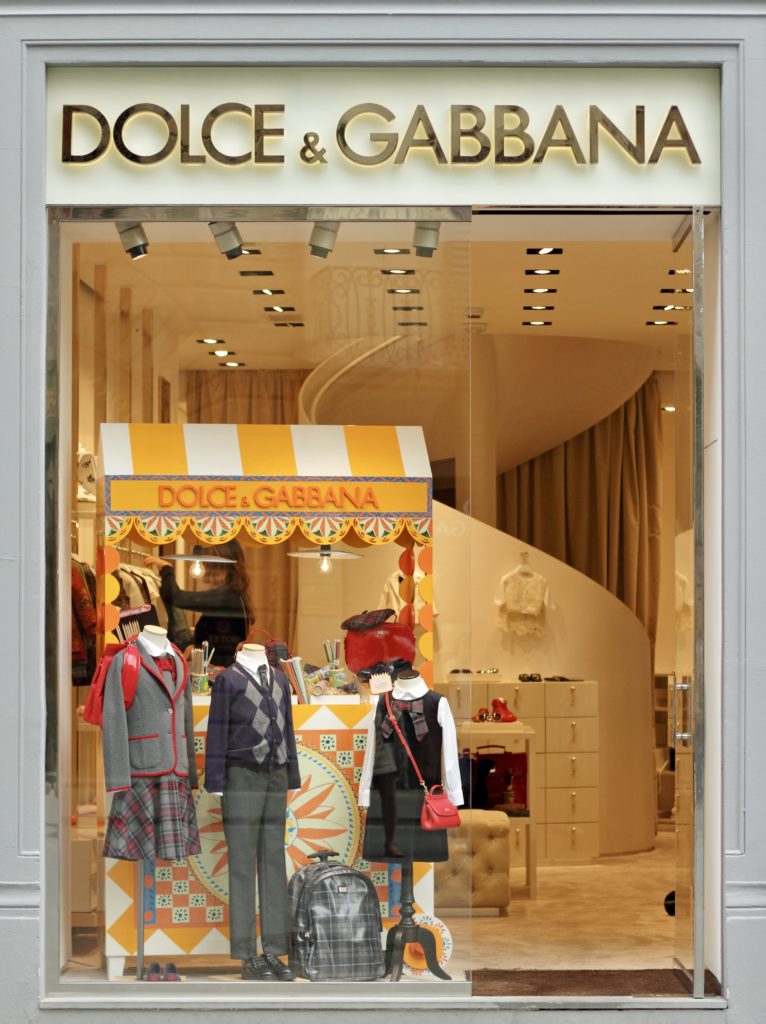
2. How To Get Around Florence
Florence is not a large city, which means you can easily cover its entire area in just 30 minutes. Therefore, I recommended spending most of your time walking around to explore the city.
In addition, most of Florence’s city center is pedestrianized, so you won’t encounter a lot of traffic.
But there are lots of other fun ways to get around Florence:
- rent a vespa
- daytime Segway tour
- nighttime Segway tour
- electric bike tour
- nighttime walking tour with an art historian
3. Florence Card & Tickets
If you’re going in high season, be sure to book tickets for the must visit attractions in advance.
If you plan on visiting most of the sites I’ve mentioned above, you should probably invest in the Florence Pass. It’s Florence’s 72 hour museum pass, which gives you entry to virtually every museum and attraction in Florence.
If you’re going to 7+ sites over your 3 days in Florence, it’s worth investing in. The card usually gives you skip the line access, but notably not to the popular Uffizi Gallery.
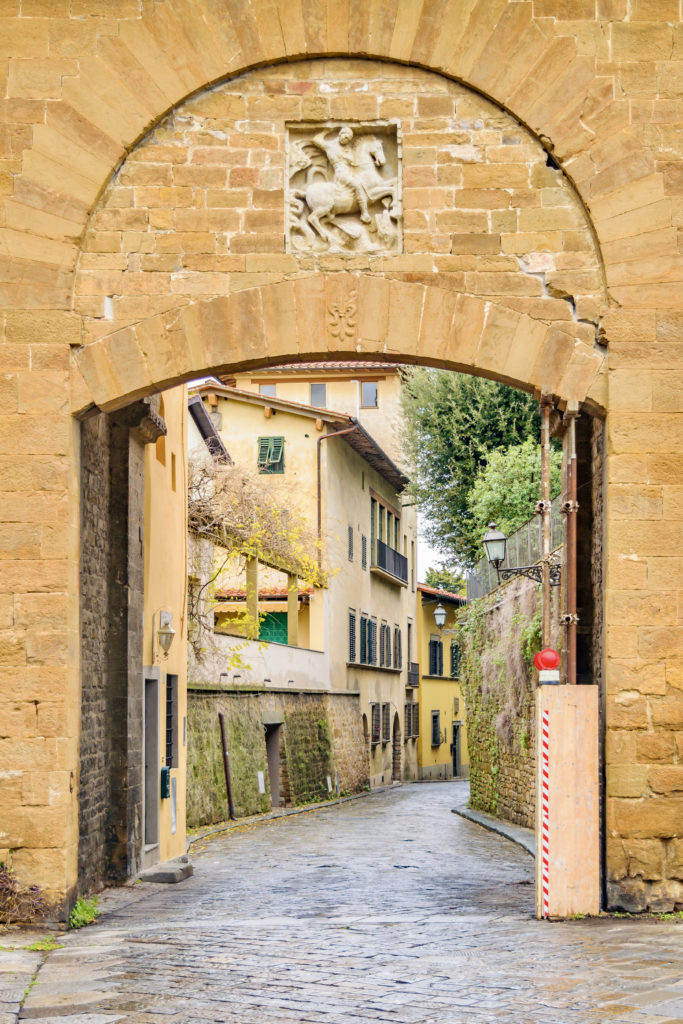
4. Where To Stay In Florence
There are plenty of amazing hotels in Florence. You’re really spoiled or choice.
If you want something central, book at the Hotel Brunelleschi or Portrait Firenze.
Portrait Firenze is one of the most sought after hotels in Italy and is just steps away from the Ponte Vecchio. Of course, the Four Seasons is always beautiful and in a quiet location.
The Palazzo Vecchietti is housed in a beautiful 16th century townhouse. The St. Regis is a beauty too, right near Santa Maria Novella. Il Salviatino has a patrician feel and offers Duomo views.
In the Oltrarno, I really like Villa Cora with its stunning views and Renaissance style suites.
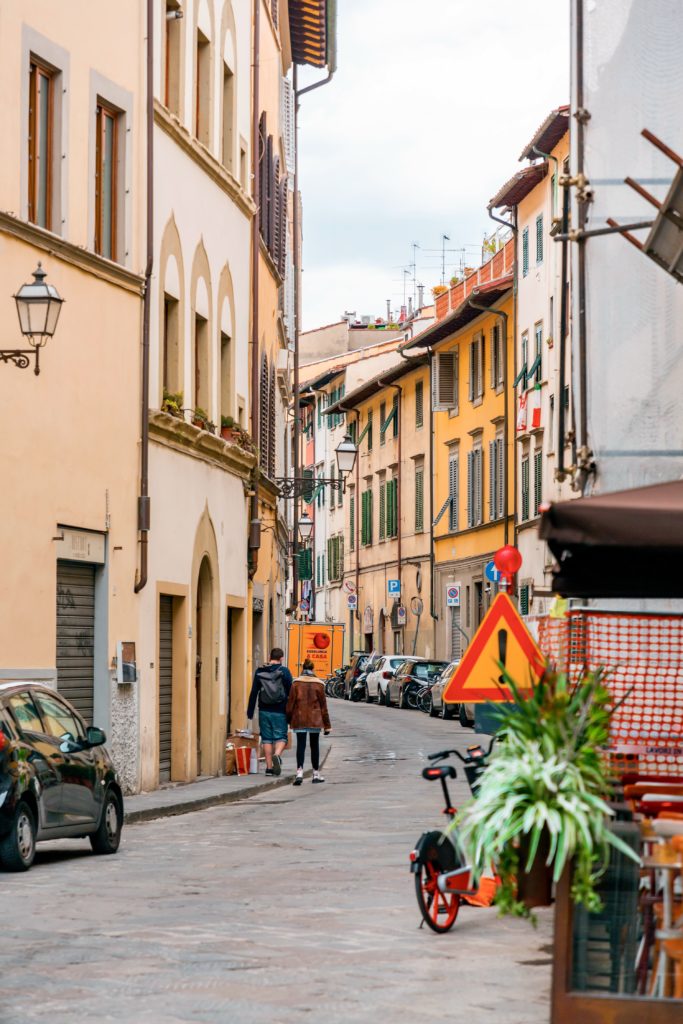
5. What Days To Visit Florence
The tourist information office in Piazza del Duomo to get up-to-date opening times for the main attractions.
Then, take a quick look at your guidebook or do a quick online search to check which sites are open and when. Remember, places like the Medici Chapels might close earlier than others.
Keep in mind that Sundays and Mondays might not be the best days to explore Florence’s museums, as many of them tend to either close or have shorter visiting hours.
The same goes for the off-season when several attractions reduce their hours. It’s also a good idea to check restaurant schedules, especially on Sunday evenings, as many might be closed. Planning ahead will help you make the most of your time in Florence
I hope you’ve enjoyed my 3 days in Florence itinerary. You may also like these other Florence travel guides:
- 1 Day In Florence Itinerary
- 2 Days in Florence Itinerary
- Hidden Gems in Florence
- Best Museums in Florence
- Florence Art Bucket List
- Best Day Trips From Florence
- Free Things To Do In Florence
- Guide to the Medici Palaces
- Who Were the Medici?
- 10 Day Itinerary for Tuscany
- 10 Day Itinerary: Italy’s Classic Cities
If you’d like to spend 3 perfect days in Florence, pin it for later.

